Nitro-frozen ice cream!
When making good ice cream, most of us know how important it is to really freeze the ice cream quickly! Still, for most of us this is a process that takes minutes, half-hours or longer, and not seconds. Unless, of course, you have a tank of liquid nitrogen at your disposal!
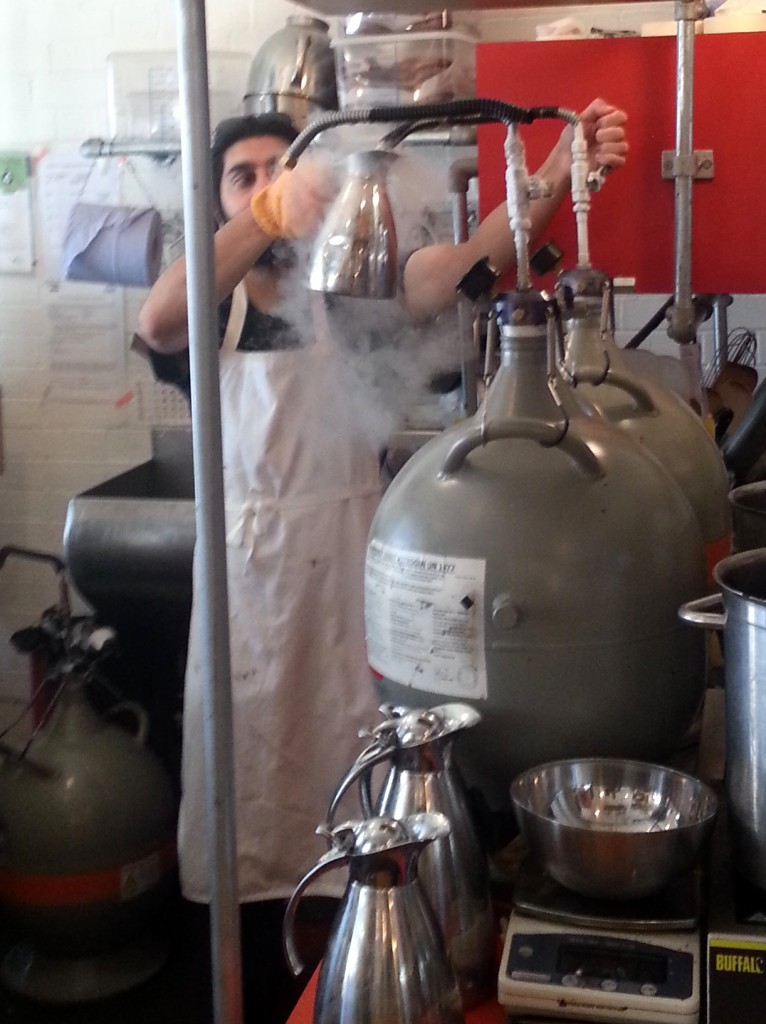
London’s nitro ice cream expert Ahrash, at the Chin Chin Labs, knows his trade! Liquid nitrogen can help create a very smooth ice cream but can also give you serious frostbites
Liquid nitrogen has become quite the rage in the past few years, and it is easy to understand why! Not only because of the miraculously smooth ice cream, but also because of the show! Watching the ice cream-making has seldom been so entertaining! Enterprising ice cream shops have managed well in providing both exhilarating flavours and visually impressive frozen cloud vapors to their delighted customers. Before paying a visit to one such place, let us quickly recall why the ice cream turns out so incredibly smooth when liquid nitrogen is at play!
Say “Hello” to Nitrogen
We are all familiar with nitrogen, even though most of us probably never think much about it. Nitrogen is a colorless, odorless and non-toxic gas which happens to make up about 78 % of the air we breath. And not only that – estimates place nitrogen as the seventh most common element in our whole galaxy!
If kept extremely cold, nitrogen will turn solid. Held at normal pressure and at temperatures higher but still very cold (between -210° to -195.5° or -346°F to -319.09°F), the nitrogen becomes liquid and stays that way (looking quite like water). If the temperature raises ever so little from there, however, the liquid nitrogen will start to “boil” and evaporate, turning into gas. Since the liquid nitrogen starts out so cold, it has an impressive (but still not totally mind-boggling) cooling power, freezing a lot of things relatively quickly.
Liquid nitrogen and smooth ice cream
So, how can liquid nitro make ice creams so incredibly smooth? Without going too far into ice cream science, smoothness is largely a matter of avoiding that ice crystals grow too large during the freezing: Typically, when any ice cream base freezes and turns into ice cream, the liquid within the base (like the water in dairy) turns into ice crystals. The faster the process of freezing, the smaller those ice crystals will be.
This is the big reasons why it is so important to chill your ice cream bases well before churning them, and also why a fast and dedicated ice cream machine generally makes smoother ice cream than your (much-slower-to-freeze) freezer. Remember: the faster the freezing, the smaller the ice crystals. And the smaller ice crystals, the finer, smoother texture the final ice cream will have.
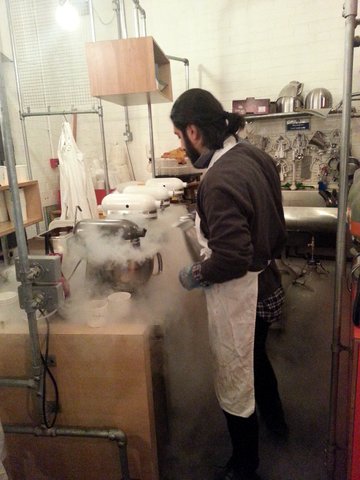
The liquid nitrogen will freeze the ice cream base so fast that the ice crystals never have time to grow large: the ice cream freezes but remains extremely smooth.
Imagine now that you could freeze your ice cream base and its ingredients so quickly that the ice crystals never have time to grow large. With liquid nitrogen to aid you, it could easily be done. Even ice cream bases spiked with notoriously difficult-to-freeze-ingredients such as alcohol are no match. However, it is still worth noting that the “cooling power” of liquid nitrogen at room temperatures actually is much less dramatic than what perhaps could be expected from such a very cold substance – I have seen figures placing it “only” about 15 % freezier than ordinary ice.
It makes sense, though: it would not be easy to serve anyone without a death wish a -200° C (-328° F) cold ice cream. In fact, you would probably not even be able to scrape it off the preparation bowl if it had become that cold.
The process
Let us take a quick look at the process with the help of the acclaimed and London-based ice cream makers at the Chin Chin Labs.
At the start of the process, the ice cream base is liquid. Just like the nitrogen in its cryogenic storage tank.
As soon as the liquid nitrogen leaves the storage tank it begins to boil and evaporate! But as long as there is liquid remaining, the nitrogen will look quite like water.
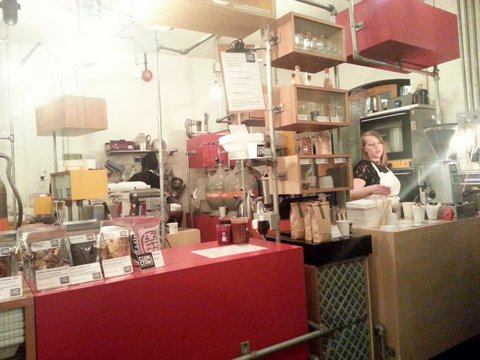
Chin Chin Labs is well known for its experimental flavours (Strawberries and hay, anyone?) but there is always vanilla and chocolate for the less adventurous 😉
Thus, simply pouring liquid nitrogen over your ice cream base would have the former floating on top of the latter. Not very effective, so a heavy duty kitchen aid equipped with a sturdy mixer blade (rather than a whisk) will help to mix the chilling agent with the ice cream base for better chill-penetration.
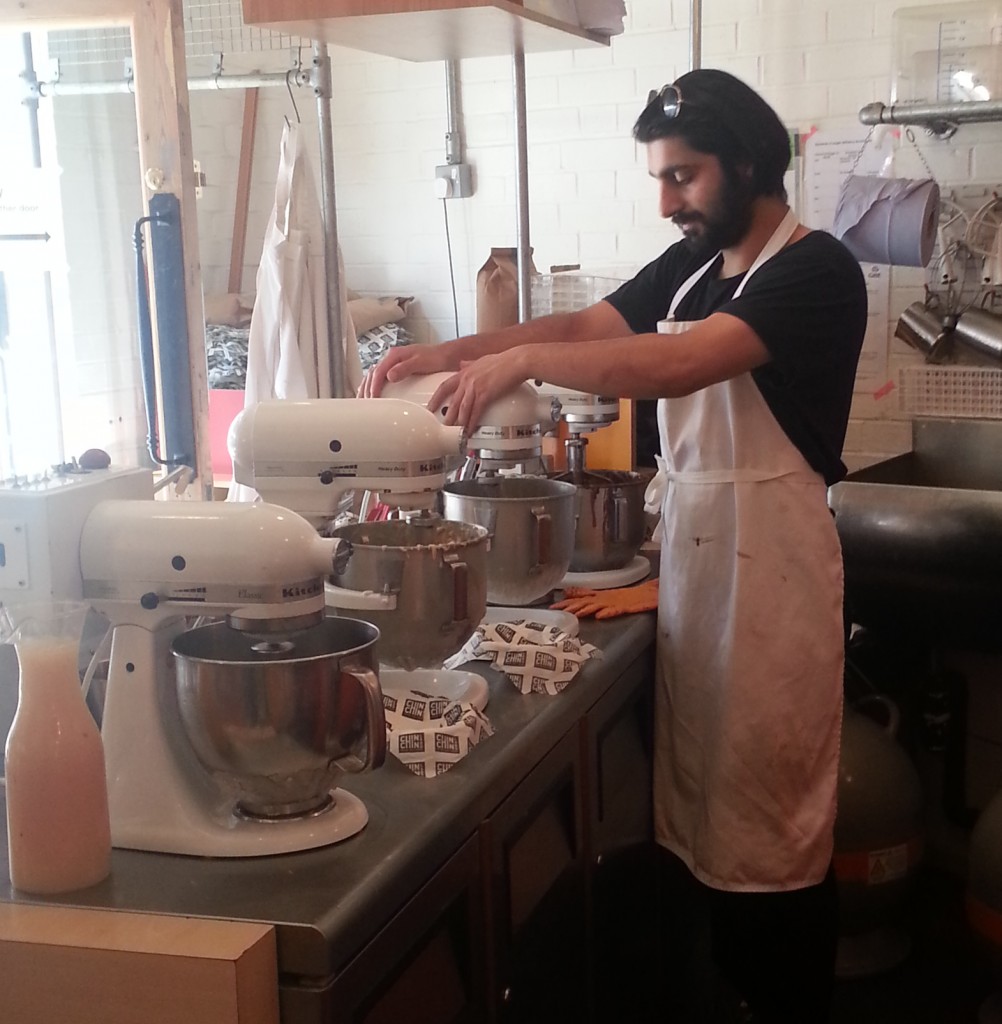
Once the ice cream base has been put in the blender and paddled around a little, the liquid nitrogen is poured into the bowl. At this temperature, the nitrogen will be “boiling” and quickly evaporates into the air.But before evaporating completely, the liquid nitrogen will have imparted its chill to the ice cream base. However, the freezing effect is not instantaneous – one litre of ice cream will require about one litre of liquid nitrogen. At the Labs, not all of it is added at the same time either.
So – how is the final ice cream?
Once the (very) short churning is done, the smooth ice cream can be served and enjoyed!
And yes, the ice cream is extremely smooth. The softness is really quite out of the ordinary, being almost butter-like in character. Unlike most other ice creams, this one seems devoid of any humanly noticeable ice crystals.
Clearly, all friends of smooth ice cream should make an effort to enjoy a nitro-frozen flavour or more!
So, is this something for your kitchen?
If you are adventurous, don’t mind the risk of frostbites, and cherish the thought of having a cryogenic storage tank of liquid nitrogen stored in your house, there might be a chance 😉 . The rest of us will have to continue to rely on pioneering ice cream shops that employ the vapor-filled technique!
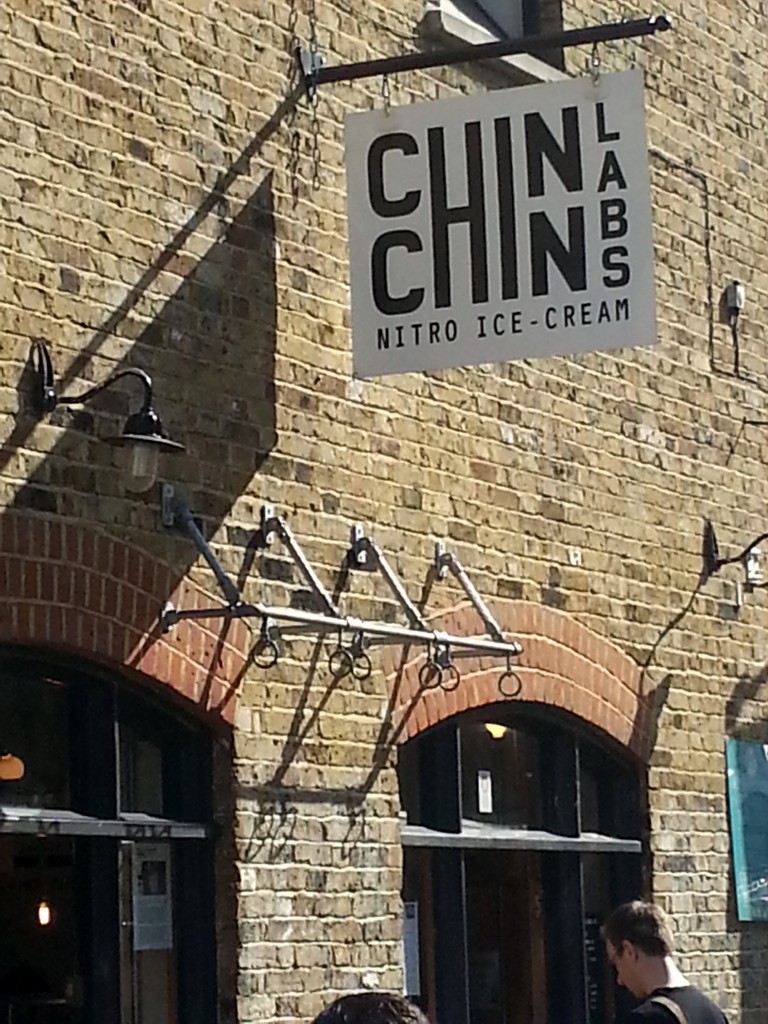


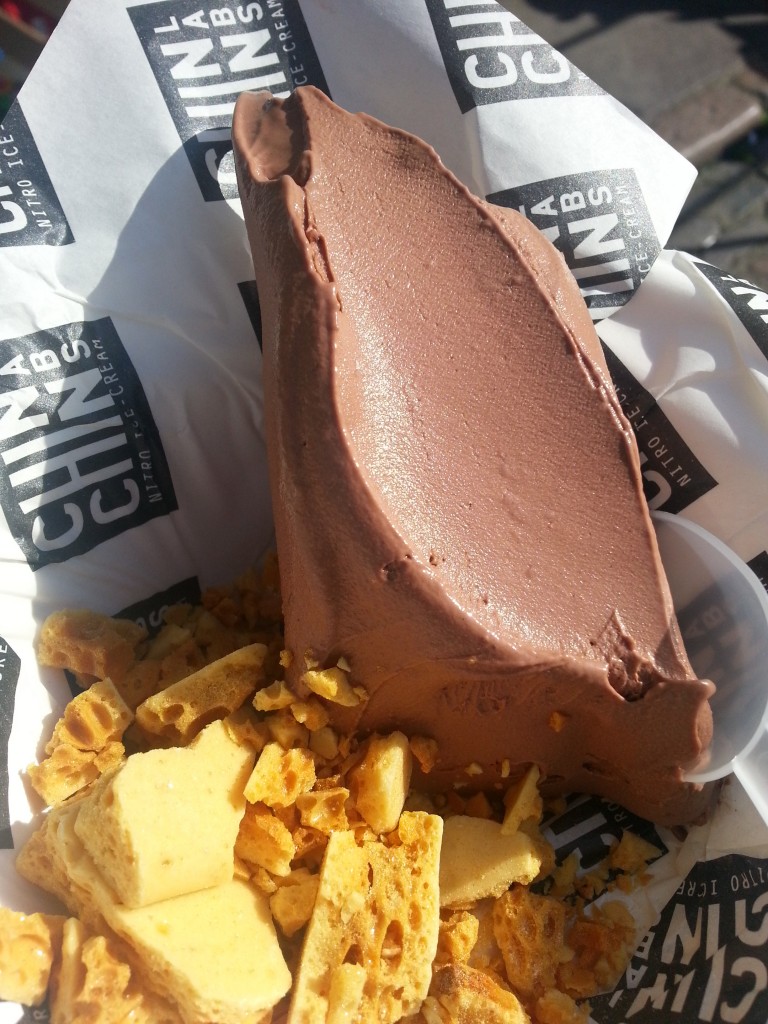
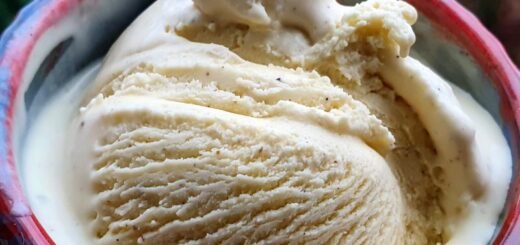
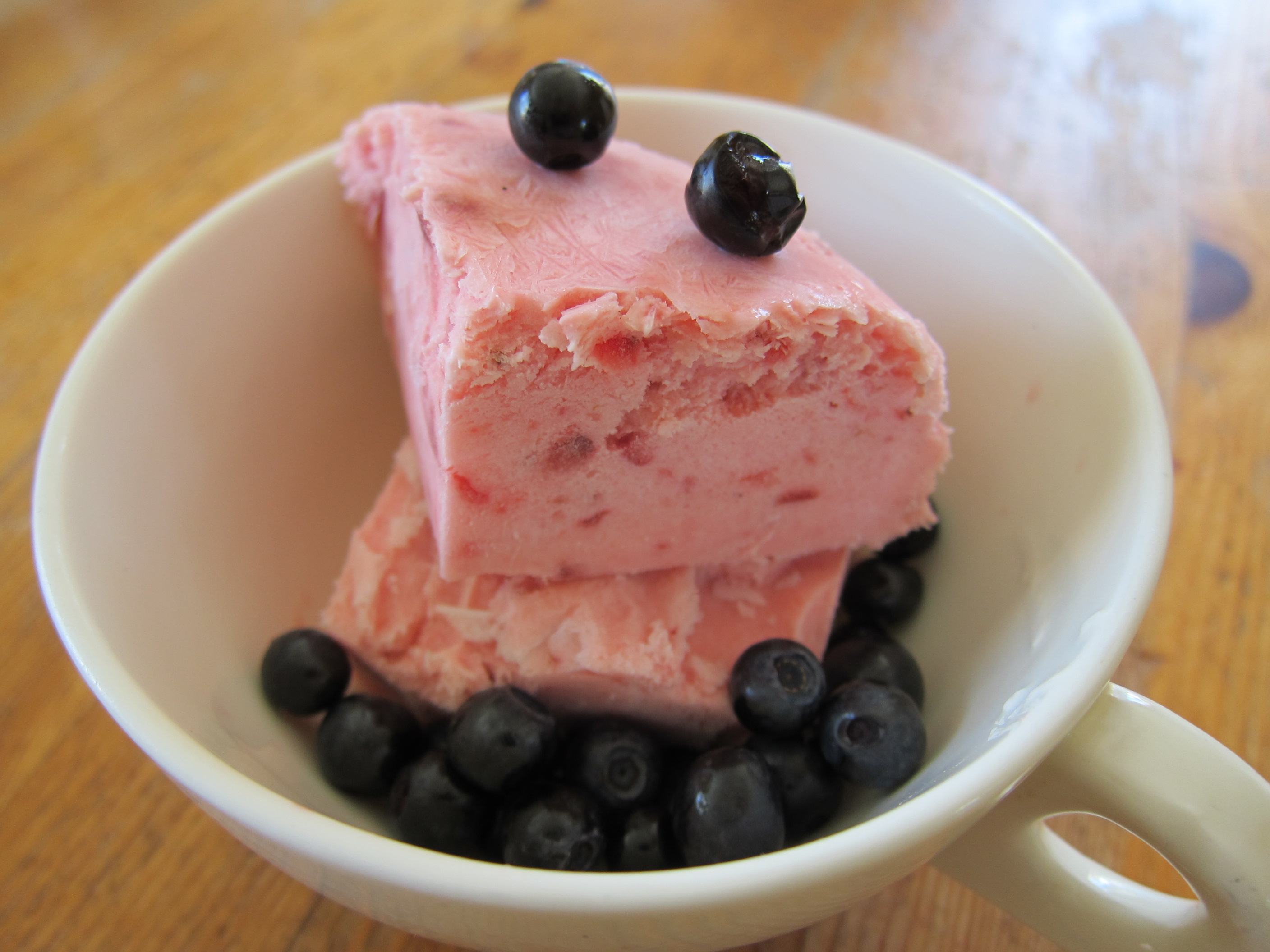



sir Anders …
can you please send me some good recipes of iccream , cake & pizza ??
thank you sir